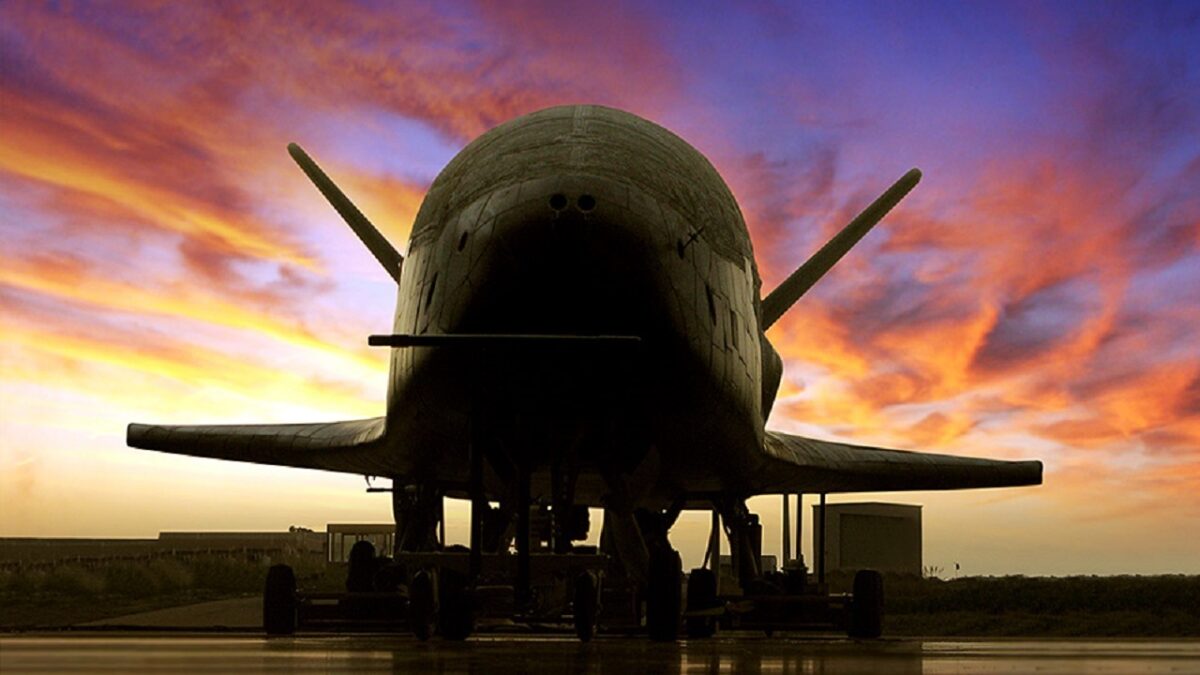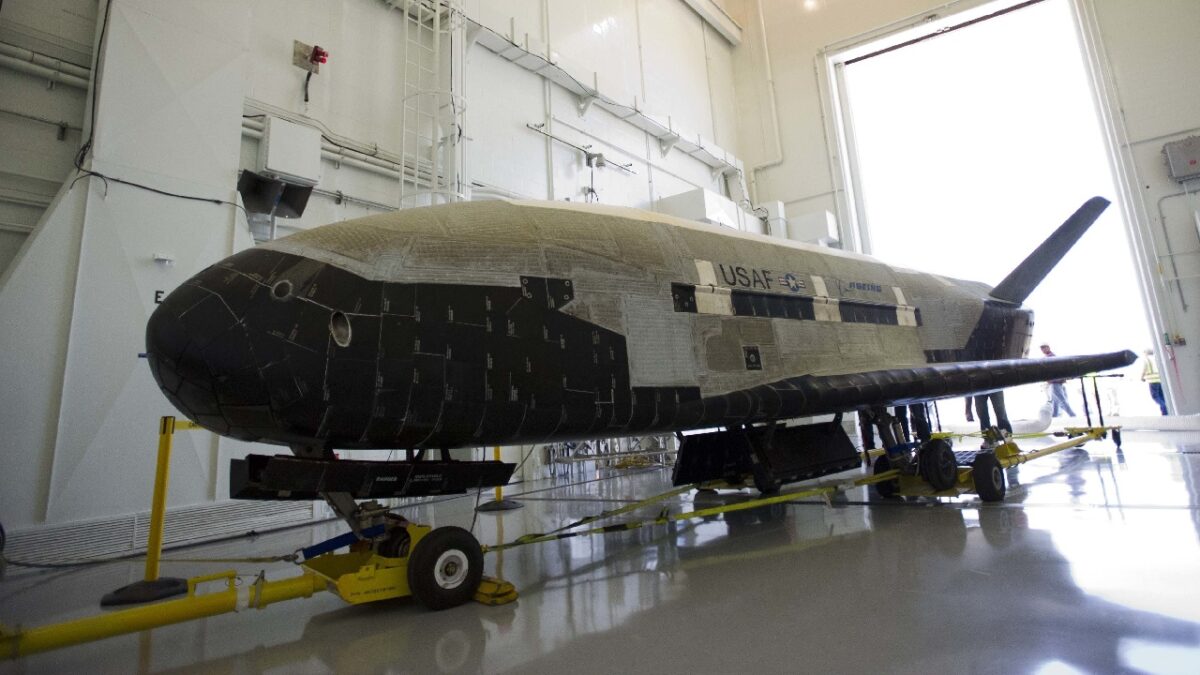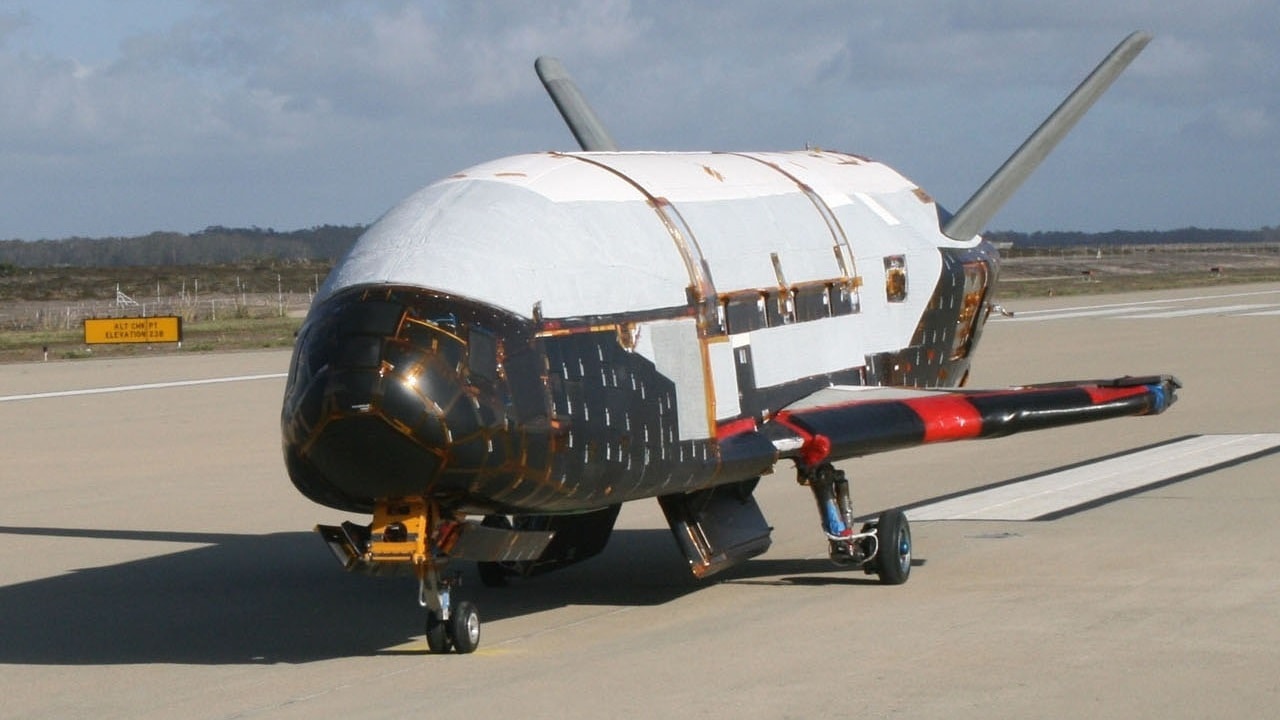Last month, the Boeing-designed X-37B Orbital Test Vehicle surpassed 800 days in space, eclipsing its previous endurance record. This feat was marked by the U.S. Space Force’s Space Delta 9, which operates the 3rd Space Experimentation Squadron’s X-37B Orbital Test Vehicle. Designed as part of a pilot test program aimed at showcasing technologies for reusable unmanned space tests, the X-37B remains one of the most unique aircrafts in the U.S. arsenal. The U.S. Air Force has previously flown five X-37B missions, OTV-1 through OTV-5. The platform most recently launched to Earth orbit in May 2020 on its sixth mission for the program, OTV-6.
(Sign up for our new daily newsletter here.)
Boeing Integrated Defense Systems was selected by NASA in the late 1990’s to design and produce an orbital vehicle. The company’s advanced prototyping branch, Phantom Works, was tasked with this assignment. Originally founded by McDonnell Douglass, this branch continued to function within Boeing and has been instrumental in previous projects including the “Bird of Prey” and X-32 Joint Strike Fighter. Over the span of four years, approximately $192 million was spent on the X-37B project. By 2002, NASA’s new Space Launch Initiative framework allocated an additional $300 million contract to Boeing to fund the project in part.
Since the X-37B’s specifics are classified, only basic facts are available to the public. The space plane is roughly 29 feet long and 9.5 feet tall with a wingspan of approximately 15 feet. As detailed in a previous 19FortyFive piece, “The X-37B takes off vertically from a space launch pad and is propelled by either the Atlas V or the SpaceX Falcon 9 rockets. Once in orbit, it has internal power that can easily carry on for more than 1-2 years. It can also maneuver on its own, and it eventually lands on a runway back on Earth, just like the shuttle or a conventional aircraft.” Boeing asserts that the space plane operates at a low-orbit with an altitude between 150-500 miles above Earth. According to Boeing, the X-37B operates at a low-earth orbit with an altitude of between 150 and 500 miles (240 to 805 kilometers) above Earth.
While most information surrounding the robotic space-plane is kept under wraps, several of its onboard experiments were disclosed prior to launch. The U.S. Naval Research Laboratory (NRL) is conducting an experiment called the Photovoltaic Radio-frequency Antenna Module (PRAM), which investigates the transformation of solar power into radio frequency microwave energy. Space Insider also says that two NASA experiments have been launched with the plane’s latest deployment to study “the effects of the space environment on a materials sample plate and seeds used to grow food.” Although more details have not been uncovered, the OTV-6 mission marks the first time the X-37B has used a service module to host experiments.
In 2020, the X-37B was awarded the Collier Trophy for pushing “the boundaries of flight and space exploration,” according to the U.S. Air Force. Barbara Barrett, the Secretary of the Air Force noted that “Sophisticated and uncrewed, the X-37B advances reusable spaceplane technologies and operates experiments in space that are returned for further examination on earth.” The secrecy and intrigue surrounding the X-37B has led Moscow and Beijing to speculate about the true intentions of the platform. A recently updated report released by the Secure World Foundation denounced Russia and China’s claim that the X-37B is an offensive weapon as unfounded.

X-37B. Image Credit: Boeing.

The X-37B Orbital Test Vehicle (OTV), the Air Force’s unmanned, reusable space plane, landed at Vandenberg Air Force Base at 5:48 a.m. (PDT) June 16. OTV-2, which launched from Cape Canaveral Air Force Station, Fla., March 5, 2011, conducted on-orbit experiments for 469 days during its mission. The X-37B is the newest and most advanced re-entry spacecraft. Managed by the Air Force Rapid Capabilities Office, the X-37B program performs risk reduction, experimentation and concept of operations development for reusable space vehicle technologies. (photo credit: Boeing)
Despite rumors that liken the space vehicle to a weapon, the platform is largely believed to function just as the U.S. Air Force claims it does. Additionally, industry experts have stated that the X-37B is too tiny and not quite maneuverable enough to perform the tasks of a plane capable of bearing munitions.
Maya Carlin is a Middle East Defense Editor with 19FortyFive. She is also an analyst with the Center for Security Policy and a former Anna Sobol Levy Fellow at IDC Herzliya in Israel. She has by-lines in many publications, including The National Interest, Jerusalem Post, and Times of Israel.

